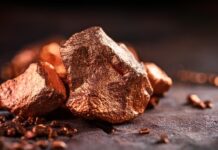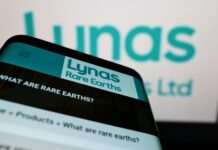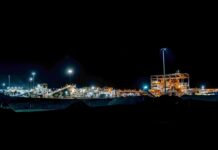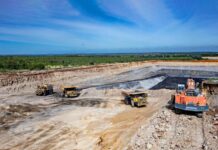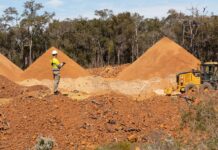THE town is Emerald by name, and, if Japanese miner Sojitz has its way, will also be emerald by nature.
Located in Queensland’s Bowen Basin, it’s has been the hub of mining operations by the trading conglomerate ever since it bought an interest in the Minerva coal mine in 1994.
By 2010, ownership had increased to 96pc, enabling the company to directly own, operate and manage the business.
In 2018, it also announced plans to develop the nearby Meteor Down South coal mine in a joint venture with U&D Mining.
Now, 25 years down the track from that initial foray, Sojitz continues to expand its presence in the region by acquiring the mothballed Gregory Crinum coking coal mine from BHP Billiton Mitsubishi Alliance (BMA) for $100 million; and with it comes plans for running its mine operations in a cleaner, greener fashion.
According to Sojitz Coal Mining managing director and chief executive officer Cameron Vorias, the company had long planned to grow its metallurgical coal portfolio.
“In an environment where there’s a de-carbonisation trend around the world, Sojitz’s response is to move our business more towards coal for steel-making rather than coal for power generation,” he said.
“On top of that, to demonstrate our environmental credentials, we’re looking at developing our own or establishing a direct relationship with solar companies in the nearby region to develop a very sizeable solar farm at the Gregory Crinum mine.
“It will commence at 20-30MW and climb to 100MW. We’re looking to not only use that power for some of our own internal use for the washplant and dragline – but also for other mining operations in the local area plus the local community.”
Mr Vorias said Sojitz was establishing a new environmental company that would be dedicated towards commencing rehabilitation of the Gregory mine, as well as taking on environmental work at other local mining operations.
Indeed, the global company takes environmental preservation activities seriously, with a policy statement that promises to “strive for a sustainable society, working to preserve the environment and prevent pollution in its business activities, while creating businesses that are both highly competitive and environmentally-friendly”.
Emerald injection
Sojitz has emerged as a major source of employment for communities around Emerald, and with clear synergies between the Minerva hub and Gregory Crinum, both operations and their workforces will be centred and serviced from the region.
After first acquiring Minerva, the Sojitz board made it a priority to win over employees who had worked for the previous owners, and who were wary of a newcomer entering the field.
It recognised that the key to a successful mine operation was ensuring that the staff felt unified and supportive of the company, which was achieved by focusing on workers’ interests and families, and lifting corporate pride through the use of the Sojitz logo on various merchandise and items connected to the mines, such as shirts, vehicles, stationery and business cards.
According to Atsuhiro Horibe of Sojitz’ Coal Dept Project Investment and Development Sector, employees were clearly “maintaining high motivation as part of the Sojitz Group”.
“We want to support them as much as possible to further increase their motivation in the field,” he said.
The ongoing Minerva open-cut operation is expected to continue operations until 2024, although the company is also exploring opportunities for a small underground operation off the final high wall.
“Our expectation is that there will be opportunities for our existing workforce at Minerva and the Meteor Downs South coal mine to consider a move to Gregory Crinum,” Mr Vorias said.
Workers at those mines would be given priority employment, as would Emerald locals.
“We would prefer a residential workforce to rebuild Emerald to where it was,” Mr Vorias said.
“There will be some people that will come out of the rest of the industry and there’s bound to be some clean skins that we will bring into the organisation as well.
“But the emphasis will be on our own people and those based out of Emerald.”
All in all, Mr Vorias said the prospects were strong for the Emerald area.
“Recommencement of mining operations at Gregory Crinum will deliver significant benefits to all our stakeholders, in addition to ensuring security of supply of hard coking coal to our valued customers, as well as providing jobs and strengthening the economy for the people in the Emerald, Springsure and Cappella areas and the state of Queensland,” he said.
“The discussions and negotiations we’ve had with local government in the area has always been centred on bringing prosperity back to Emerald, by providing additional jobs and more opportunities for local suppliers and general industry.
“We’re working with local government to look at other opportunities and how we can support some expansionary developments in the Emerald area outside mining.”
The company expects to employ up to 200 further workers in the region over the next 12 months, climbing to a peak of 300.
“We are also in final negotiation on a nearby third-party coal mine that is very close to Gregory Crinum called the Wilton-Fairhill mine, owned by Futura Resources,” Mr Vorias said.
“Due to our thin seam expertise, we are the logical group to contract mining that operation, wash it at the at Gregory Crinum facility and sell it into the international market on their behalf.
“The mine alone would generate an additional 50-100 jobs over the next five years.”
Previous owners BMA echoed the sentiment, with asset president James Palmer saying the Gregory acquisition would provide new job opportunities and trade benefits for the people of central Queensland, as well as increased royalties and taxes to benefit the state.
Gregory Crinum
The restart of Gregory Crinum will be delivered in two stages, with the first stage focusing on the refurbishment of the processing plant, followed by the full operations and maintenance contract of the processing plant for the next three years.
Sojitz has said that the mine would have an annual capacity of up to 3Mtpa when fully operational, with a life of more than 20 years.
It also said restart operations would begin in the first half of its 2019 financial year, with the first shipment of coal in the second half of the year.
The site comprises the Crinum underground mine, Gregory open-pit mine, undeveloped coal resources and on-site infrastructure including a coal handling and preparation plant, maintenance workshops and administration facilities.
Gregory Crinum Mine’s capacity was 6Mtpa of hard coking coal when production ceased, and it was placed into care and maintenance in January 2016.
BMA said it made the decision to sell after a detailed review concluded there was potential for another party to realise greater value at the mine.
Shosha redemption
The Sojitz board had initially been cautious about how it would manage the Minerva investment after its initial 30pc acquisition in 1994.
The company was a “shosha”: a diversified trading conglomerate with a business model unique to Japan.
Unlike trading companies in other countries, which are generally specialised in certain types of products, shoshas have extremely diversified business lines.
Sojitz itself runs nine separate divisions: automotive; aerospace; machinery and medical infrastructure; energy and social infrastructure; metals and minerals resources; chemicals; foods and agriculture; retail and lifestyle; and industrial infrastructure.
According to Sojitz manager Toshiharu Chichibu, the notion of shoshas taking care of marketing, even as minority shareholders, was relatively common at the time the company moved into Minerva.
“However, the practice of shoshas participating in such investment projects as a minority was expected to gradually fade out,” he said.
“Thus, we came to see the goal of operating and managing the mine by ourselves as the same as coal suppliers, steering toward future growth.”
It’s been a worthwhile investment that Mr Chichibu is proud of.
“What I feel from being involved in this project is a sense of fulfilment,” he said.
“I feel it in all aspects from the start of the project, to setting up the company, to its operation, so I feel challenged and rewarded for thinking about daily management from the beginning.
“The life of the Minerva coal mine is limited, but I want to utilise what I have learned at Minerva for the next project.”
Coal remains Queensland’s biggest export, making up 40pc of the State’s total exports.
According to Qld Resources Council chief executive Ian Macfarlane, Queensland coal was the commodity of choice for Asia, with the State’s economy benefiting from key trade links with growing economies.
“The State’s high quality coal is not only supporting the jobs of more than 215,000 men and women but continues to be the central commodity driving exports,” he said.
“Queensland has an advantage over other states with its close proximity to the economies of China, India and Japan. Every quarter we see export data repeating a comment theme – the world needs our metallurgical coal to make steel needed for building modern cities, and our high quality thermal coal is delivering tomorrow’s energy needs through high efficiency, low emission coal-fired power plants.”
Coal exports contributed $36.3b – an increase of $5b or 16pc – over the previous 12 months.
In total, the resources sector made up $68.2b, which helped Queensland post a record $84.3b in exports until the end of March this year.

